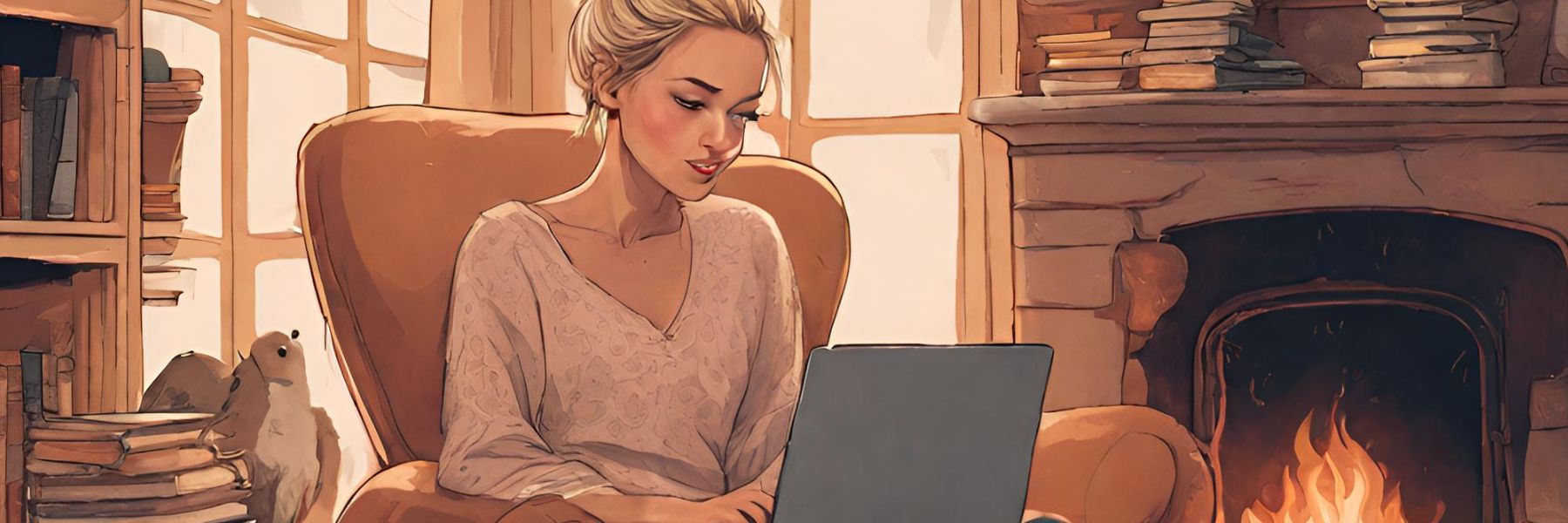|
First and foremost I want to thank the inimitable Louann for allowing me to be a guest at her well-crafted website. And thank you for not reading this sentence.
By the end of this post, I will unleash a mysterious puzzle. Read on… I just released my first suspense novel, The Torah Codes and here’s what people are saying about my novel: “The story held my attention…. In fact, I had to force myself to stop reading last night.” –Mackenzie Jones, Amazon customer “This book has a compelling story line and was actually hard to put down.” –Troy B. Stengel, Amazon customer “My husband and I read this out loud before bed for about a week. It was so exciting that we read two hours each night instead of our usual one hour.” –June Safran, Amazon customer “This book is a page-turner that I found very difficult to put down.” –A.R. Cook, The Book Review As you can see, creating a page-turner is a skill of mine. Now, many authors think crafting a page-turning plot is a challenging task, but actually a good plot can be created using a few time-tested, proven methods. And if you just follow a few of these tips, your fiction is bound to be hard to put down. · Line the Cover with Glue Though not the most common method, this is a sure-fire way to make your book hard to put down. · Have a Time-Lock Incorporate a reason for why the protagonist needs to do something within a certain – preferably short – period of time. Imagine a girl in high school being dared to tell the handsome boy in her English class that she likes him. That’s somewhat interesting, but there’s no sense of urgency. She can tell him whenever the moment is right, which may be never. Add a time-lock and see what the result is: If she doesn’t tell him by the end of the day, her “friends” will tell the boy that she likes him and that she’s too chicken to tell him herself. Not only does it create a sense of urgency, but it also creates a sense of dread, especially since there will probably never be a “right time” to tell him, so whatever the circumstances are, there’s risk of humiliation, rejection, and even worse, what if he says he likes her, too? What will she have to sacrifice to be in a loving relationship with him? There’s a certain comfort we take in not knowing how the other feels, right? Because as long as we don’t know, the possibility of getting what we want is always there. But I digress… · Present a Deluge of Obstacles For using this method of creating a page-turning plot, first determine the protagonist’s main external goal. Maybe it’s finding the sunken treasure (before the competitors set out to do so next week), maybe it’s finding the killer (before he kills again tomorrow). I stress that the goal must be an external one, because any internal goal is typically a character arc and has next to nothing to do with plot. Overcoming one’s insecurity over committing to love is an internal goal and can be just as compelling, but my focus here is plot. This brings up the point that completing an external goal doesn’t necessarily solve the internal goal, right? Just because the girl and boy reveal their love for each other doesn’t necessarily mean the girl has overcome her feelings of loneliness. But that’s another blog post. Once you know the external goal, create a list of obstacles that could get in the way of achieving that goal. Perhaps the treasure-seeker has a sinking ship, a severe virus spreads among the crew, a traitor is on board, all of these are obstacles. The best obstacles to have not only depend on the goal, but also depend on the genre. For thrillers, the common obstacles are anything that threatens the life and safety of the protagonist or of the protagonist’s loved ones. Though I don’t write romance, I imagine the external obstacles would be more along the lines of succumbing to temptation, public humiliation due to reputation, experiencing rejection, or physical distance separating loved ones. I may be completely wrong about that, but the point is that the primary obstacle of the general romance genre (not counting romantic suspense, for example) is not focused on threats to the protagonist’s life as thrillers are. Now that you have your list of obstacles, either come up with creative ways or have the protagonist come up with creative ways to overcome each one. It could be that a resolution is found by not directly overcoming the obstacle. For example, the treasure-seeker resolves the sinking ship problem by, oddly enough, failing to stop the ship from sinking. He dives to his sunken ship to save the photo of his loved one, in the process discovers that the ship has coincidently sunk directly on top of the ancient treasure he set off to find. · Consider Using a Cliff-Hanger I understand that it may not be appropriate in every genre, but cliff-hangers always keep the reader turning pages. The simplest way to create a cliff-hanger is to simply restructure the format of the chapter. Often the chapter format is: a) the protagonist gets faced with an obstacle, b) the protagonist overcomes the obstacle. For cliffhangers, have the chapter format be: a) the protagonist overcomes an obstacle from the previous chapter, b) the protagonist gets faced with an even bigger obstacle. The reader will want to start the next chapter to see how the situation gets resolved. · Consider the Antagonist’s Obstacles and Resolutions In my thrillers, I like to have a see-saw effect of giving obstacles back and forth between my protagonist and antagonist. The difference is that the antagonist is faced with and overcomes his/her obstacle within the chapter. The protagonist overcomes each obstacle in a later chapter. Often, the way the antagonist resolves their obstacle creates the new obstacle for the protagonist. So a typical chapter might be a) the protagonist overcomes an obstacle causing b) a problem for the antagonist, c) the antagonist solves his problem causing d) an even bigger obstacle for the protagonist. · Create Subtext A simple boring dialogue can be made exciting by having one character not know what the reader or the other character knows. If a boyfriend and girlfriend meet for lunch, the dialogue won’t be nearly as interesting as knowing that this is the day she is working up the courage to break up with him. Now the dialogue is compelling. Every time she simply says to her boyfriend that she’s “fine,” and that her food “tastes okay,” brings us closer to yelling at her either “Do it! Do it!” (Break up with him) or “Don’t do it! Don’t do it!” In the excerpt from my book The Torah Codes below, the antagonist Luke McCourt meets the protagonist’s friend Sophia on a train. Though the protagonist, Nathan, has told Sophia about Luke, she has never seen him before. So while Luke knows who she is, she doesn’t know who he is. And as we have already read about Luke’s deadly activities, all we know is that Luke has something horrible planned for Sophia. In other words, the Cat is playing with a Mouse. Sophia wasn’t sure what an Indonesian looked like. “Are you from Indonesia?” She asked. “Sorry?” the gentleman shouted over the din of the train. Sophia repeated her question louder. “No,” he said and laughed. “New York. And you?” “Well, my mother was born in Switzerland, and my father’s parents were from Hungary, but he was born in the Bronx. They met in the Bronx, but I was born in San Francisco. I guess you could call me cosmopolitan.” She said. The gentleman smiled and asked, “And where are you just coming from, if I may be so bold?” “Oh, yeah, no, I’ve got no secrets. Ask me anything you want,” Sophia said waving it off with her hand. “I read tarot.” “Tar—?” “Tarot, you never heard of tarot?” “Please forgive my ignorance,” the gentleman said with a smirk while raising an auburn eyebrow. “Oh, no, don’t worry about it. I’m just surprised, is all,” Sophia said. “Tarot is a method of divination used with a certain deck of cards…Have we met before?” “I think I would have remembered a face like yours,” he said. Sophia felt herself blush. “It’s just, there’s something about your face that I’m picking up, but I’m not sure what it is.” Sophia studied his face closely. The cards could tell her. She opened her backpack purse. “Why don’t I give you a reading!” “Oh. Thank you very much. But I’m not a big believer in divination.” Sophia closed her purse and set it down beside her. “Yeah, neither is Nathan.” “Nathan? Is that you’re boyfriend?” “No,” Sophia laughed. “Well, not yet, anyway.” The gentleman chuckled as if they just shared a secret. “So what’s stopping you two?” he asked. “It was never really a matter of whether we’d be friends enough to become boyfriend-girlfriend. We didn’t really start off as friends. He just needed me to help him out with some weird thing that happened to him which I won’t go into, but I’m telling you,” she patted the air to emphasize her words, “it’s really weird.” The gentleman listened carefully. “Anyhow,” Sophia said, “he just needed me to be there for him.” “Isn’t that what loved ones do for each other?” “I suppose. And, yeah, you’re right. I guess I do like him. I mean, he’s handsome, he’s smart, and he’s so funny,” she laughed. “You just like him?” the gentleman asked. “Okay, okay. I love him.” She shook. “Ooh! I just got chills all over. It’s one thing to feel it, but actually saying it. Announcing it. Putting it out there.” She sighed. “It makes it so real.” “Does he know your feelings for him?” “Yeah, I think it’s pretty obvious.” Sophia looked down at her bracelet with a stainless steel design of two hearts and fiddled with it. “But if he liked me the same way, I guess he would have told me by now.” “Not necessarily,” the gentleman said. “Several years ago I was madly in love with an exotic Indian woman. She was a photographer, like myself, and we met at a photography expo. I had seen her work on tulips, and was struck most by one of her pieces. It was a stunning image of two blue tulips—just the tops—nested in a porcelain teacup. I spoke to her about it and one thing led to another, turned out we spent more time with each other than at the expo. I even managed to buy her blue tulips, and believe me, they were not easy to come by.” “Aww, that’s so sweet.” “She made her feelings for me very clear. Unfortunately, I had a, oh, shall we say, family mission that wouldn’t allow me the freedom to make the kind of commitment she was looking for.” “What kind of mission?” “It’s very complicated so I won’t go into it, but let’s just say,” he patted the air, “it’s very complicated.” Sophia laughed. “In her hotel room over tea, I explained to the best of my ability how I wanted to be with her but the reality of it was impossible. We parted that evening having made plans to meet for breakfast before she left for the airport. She even gave me her spare room key in case she was in the shower when I arrived.” He smiled. Sophia returned the smile. “That evening, I returned to my room, and I’ll tell you it was the longest evening of my life.” “Why’s that?” “For hours I debated whether or not I should commit my life to this wonderful woman, or should I stay true to the family mission. My conclusion was that my family be damned, I was going to give everything of me, body and soul, to this woman. And I couldn’t wait to tell her so at breakfast.” “So what happened?” Sophia’s eyes widened. “I couldn’t sleep the rest of the evening. But I didn’t want to ruin her rest, so I waited for the agreed upon hour to arrive. At six o’clock, I knocked on her door. No answer.” “Oh, no.” “I tried again. Still, no answer. Perhaps she was in the shower. I used the key she gave me and opened the door. The room was empty. No clothes, no items in the bathroom. Only the two teacups from the night before. And in one of them, two blue tulips.” Sophia sighed. “There was a note from her beside the teacups.” “What did it say?” Sophia asked. “She apologized for missing our breakfast but chose to take an earlier flight because the idea of spending time with a man she could never have was too much for her to bear.” “And you didn’t call her?” “I had no contact information on her. I could have easily found it, but I took her leaving as a sign.” “A sign?” “A sign to stay true to the family mission. But the point I’m trying to make here is that Nathan may soon realize just how much he needs you. Don’t be surprised if he comes over one day with a ring. All you need to do is be there for him.” The gentleman leaned close to her. “And does he have your cell phone number?” Sophia laughed. “He does.” “Good.” He smiled. Sophia’s fingers itched and tingled. Her tarot cards were so close, and they could help her decide what it was about that smile that seemed off. “I’m Sophia, by the way.” She extended her hand. “What’s your name?” The gentleman looked up to his right. “Charles,” he said, taking her hand. Sophia felt her stomach tighten. The man had made up his name. A family mission? A photographer? “Oh, dear,” the man said holding her hand tighter. “It seems you caught me in a lie. I can always read fear in a face. Allow me to introduce myself. I am Luke McCourt.” *** So we covered several tips on how to make a page-turner, but I’m sure I left out quite a few. Please comment below about how you make your fiction hard to put down. I’d love to learn from you! Now for the mysterious puzzle. You know how every year in “Happy Thanksgiving, Charlie Brown!” Sally says, “It’s Thanksgiving already? I haven’t even finished my Halloween candy!” But every year in “It’s the Great Pumpkin, Charlie Brown!” Sally misses Halloween waiting in the pumpkin patch for the Great Pumpkin! Where does she get her Halloween candy from? Not from Charlie Brown. When he went trick-or-treating, he only got rocks! I stay up nights trying to figure this one out. To read more of THE TORAH CODES free, go to http://www.facebook.com/TheTorahCodes. BIO Ezra Barany has been fascinated by codes and puzzles ever since he was a little tot. He started writing suspense and thriller stories in college and got seriously interested in the Bible codes while attending Aish HaTorah’s Discovery seminar in Jerusalem. The Torah Codes is Ezra’s first novel. Ezra has been a high school physics teacher, fiction writing teacher, songwriting teacher, ESL teacher to French children and pop performer. In his free time, he writes mushy love songs inspired by his wife and book coach Beth Barany. Ezra now lives in the San Francisco Bay Area where he is working on his next book. He is available for presentations and select readings. To inquire about an appearance, please contact Ezra[at]TheTorahCodes[dot]com. Comments are closed.
|
Sign up today for freebies and fun. Grab your chance at signed copies of my paperbacks and free e-books.
For Kobo coupons click here or copy and paste the link into your browser.
http://www.therawfeed.com/stores/kobobooks-com |
Proudly powered by Weebly





 RSS Feed
RSS Feed

